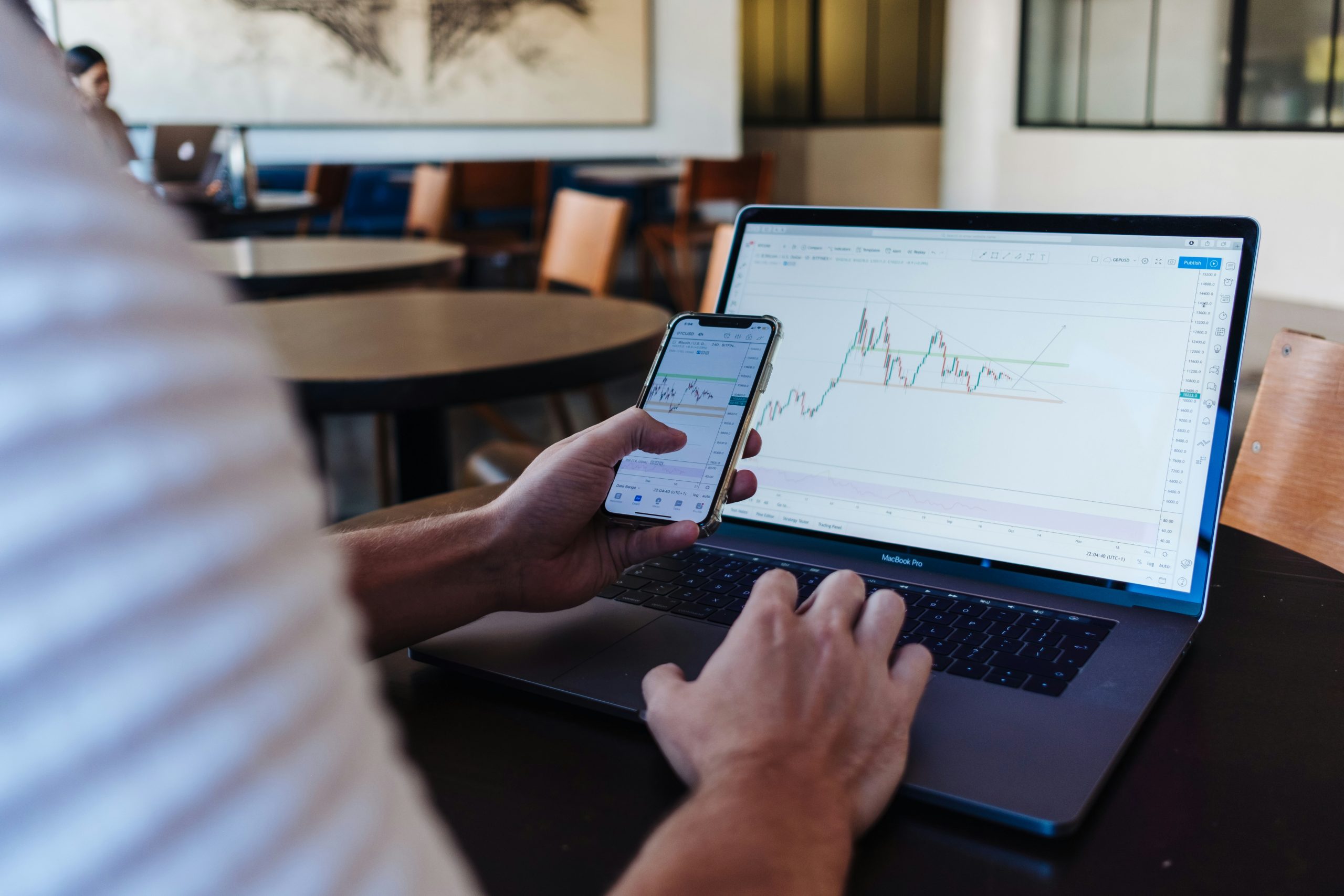Investors are constantly searching for tools to improve their returns, especially those that make them more time-efficient and reduce the risks associated with financial markets. One such tool is the algorithmic trading program. This article explores how algorithmic tools (trading robots) are deployed to trade markets and enhance investors’ portfolios.
Algorithmic Trading in Forex
Technology has given traders new tools to trade financial markets. One popular tool is a “trading robot,” a computer program that makes trades automatically based on preset rules.
Many forex brokers now allow algorithmic tools for trading forex. Traders can create customized robots to follow their specific trading rules and systems.
For example, a trader might program a robot to buy a currency when the price drops to a certain level. The robot will then make the trade as soon as that event happens without needing the trader to monitor and take action manually.
The main appeal of trading robots is taking emotion out of decisions. The robot, guided by the algorithm, buys and sells based solely on data and math programmed by the trader. This helps traders avoid the common judgment errors they often face in volatile markets due to psychological factors like fear and greed.
Some advanced robots even employ artificial intelligence to analyze market patterns in large data sets. The AI robots can optimize and adapt trading strategies by learning from past performance.
Features of Algorithmic Trading
- Automated executions: Trading algorithms can execute trading actions automatically, allowing traders to catch price movements without manually entering trades. This feature is vital for traders who scalp markets. Automated executions are based on predefined rules and remove emotional involvement in trading.
- Customization: Traders can customize their algorithmic tools for specific entry and exit prices, strategies, indicators, etc. Customization allows traders to input defined parameters so the trading robots can trade according to their plans. Some brokers allow traders to import and customize third-party programs and the built-in programs they provide.
- Data analysis: Analyzing large trading data sets is essential in technical analysis. Trading algorithms can quickly and effectively analyze large data sets from proprietary and third-party sources. This feature can increase traders’ performance by healthy margins when supercharged with machine learning.
- Risk management: Since they follow instructions strictly and use SL and TP, trading robots can manage trading risks and enhance your forex portfolio. Risk management is a crucial aspect of portfolio management, keeping the trader on the safest part to make profits from financial markets.
- Diverse strategies: Whereas human traders often rely on one or two strategies and try to become experts on them, trading robots can operate as many strategies as possible; traders only need to program them. From scalping to breakouts and trend trading, algorithmic trading can diversify trading to maximize the potential profits on any account.
- Speed and efficiency: Cost and time efficiency help traders to catch profitable trades and exit positions early. This is another feature that trading robots excel at. They are faster at analyzing data, spotting patterns, learning, training on large data sets, and executing trades.
- Backtesting and optimization: Traders backtest data and strategies to determine profitability. The process is easier and faster with algorithms capable of handling data at extreme speeds and adjusting to optimize strategies based on the results.
Algorithmic Strategies for Enhancing Your Forex Portfolio
All strategies are compatible with trading algorithms when well-interpreted as code or instructions. Some popular strategies forex traders use for robots are:
- Trend trading: This relies on impulsive price movements and volatility in any direction. Trend traders try to catch trends when they start or at retests before they continue. Trading algorithms are typically instructed on spotting trends and trading accordingly; this could be by tracking indicators or executing trades when the price hits a certain level.
- Portfolio diversification: Algorithm trading strategy for portfolio diversification involves analyzing different markets and assets, assessing the volatility levels, calculating potential returns and risks, and spreading the investment capital across the chosen assets. Traders usually determine this, but they can train the robots to learn and execute such actions.
- Scalping: Scalpers buy and sell assets quickly to take small profits and reduce the impact of volatility. Algorithms can execute dozens of trades simultaneously and are better at scalping than humans. High-frequency trading is a typical example of scalping with training algorithms.
- News trading: Fundamental traders looking to trade high-impact market news can also deploy algorithms to execute trades based on the predicted market response. AI-based algorithms can source and analyze news and combine technical analysis to locate potential entry and exit prices.
- Breakout and range trading: Price breakouts and ranges rely heavily on support and resistance levels; traders can program algorithms to locate essential price levels and combine indicators that predict momentum and volatility to find breakouts and swinging prices.
Benefits of Using Algorithmic Trading
- Discipline: Trading robots ensure that trades are executed to the letter according to the given instructions. They are wholly emotionless and do not hesitate or rethink trades. This can help traders maintain their trading discipline, adhere to strategies, and remain consistent.
- Scalability: Handling large data sets, large trading volumes, and quick adaptation to trading conditions are excellent qualities that help traders scale their forex portfolios. This is a significant advantage of algorithmic trading. They are fast, efficient, and always available 24/7. Trading robots are usually deployed over virtual servers to ensure stability.
- Risk management: Pre-built tools help traders maximize and enhance their portfolios.
- Access to multiple markets: algorithmic trading allows traders to explore various markets simultaneously, potentially increasing their profits through portfolio diversification.
- Improved trading conditions: Their capacity to execute trades instantly allows trading robots to reduce slippage or spread, stay ahead in the order execution pool, and get opportunities ahead of human traders.
Start Your Algorithmic Trading Experience
With all this information, are you ready to launch your algorithmic trading tools on your favorite platform? If you learn how to translate your trading strategies into actionable instructions for trading programs and extensively backtest them to determine the precision, you can leverage algorithmic trading to enhance your forex portfolio. This saves you time and energy, giving you the space to grow and develop other skills required for trading.



